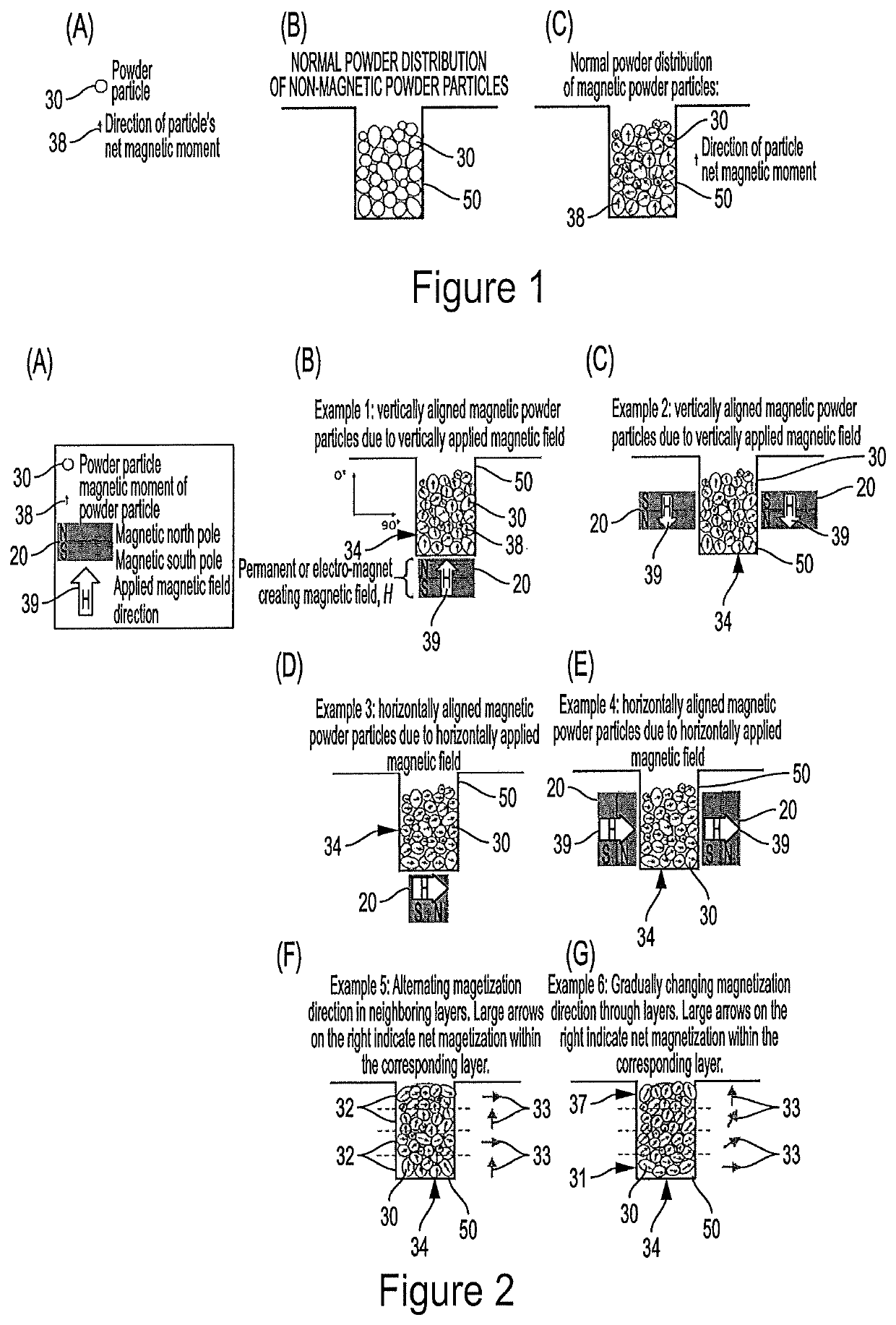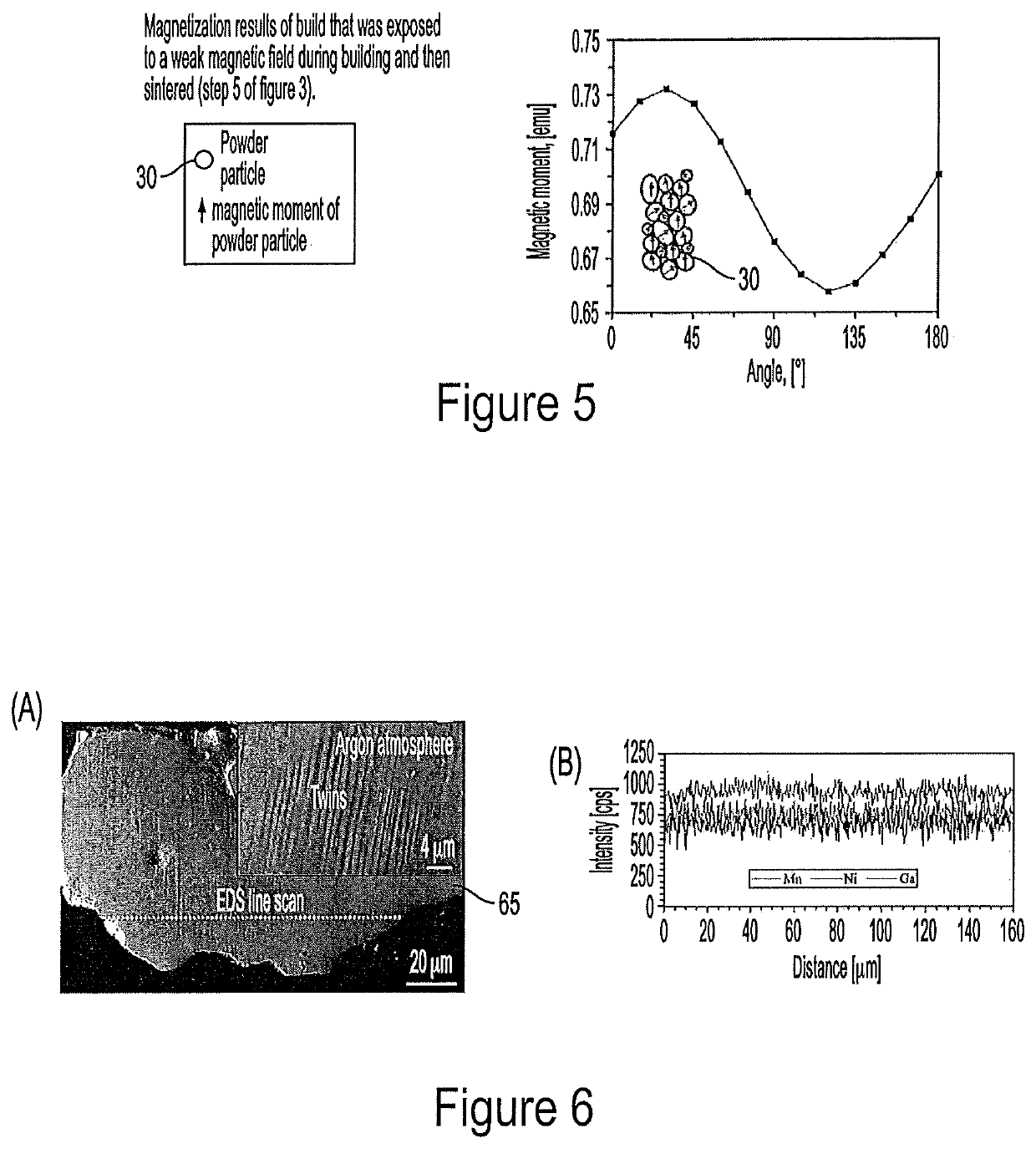Alignment of magnetic materials during powder deposition or spreading in additive manufacturing
a technology of magnetic materials and additive manufacturing, applied in the direction of magnetic core manufacturing, inorganic material magnetism, application of conductive/insulating/magnetic materials on magnetic films, etc., can solve the problems of no technique, random orientation of bulk parts, etc., and achieve the effect of increasing density and stability
- Summary
- Abstract
- Description
- Claims
- Application Information
AI Technical Summary
Benefits of technology
Problems solved by technology
Method used
Image
Examples
example 5
[0075 of FIG. 2(F) demonstrates a build or sample 34 that contains alternating vertical and horizontal net magnetization directions 33 between neighboring layers 32. Example 6 of FIG. 2(G) demonstrates a build 34 within which the net magnetization direction 33 gradually changes from bottom layer 31 to top layer 37.
[0076]FIG. 4 demonstrates a preferred method according to the present disclosure for producing a layer 57 with net magnetization in a direction that is not perpendicular to the plane of the layer 57. In step 1 shown in FIG. 4(A), the powder particles 30 have a various magnetic moments 38 and so do not produce a significant net magnetization direction. In step 2 shown in FIG. 4(B), a plate 55 is used to apply compressive pressure 60 to the powder layer 57. In step 3 shown in FIG. 4(C), an external magnetic field 39 produced by magnets 20, previously not present, is applied; simultaneously, the compressive pressure 60 continues to be applied via plate 55 and may be increased...
PUM
| Property | Measurement | Unit |
|---|---|---|
| magnetic field | aaaaa | aaaaa |
| pressure | aaaaa | aaaaa |
| magnetic moments | aaaaa | aaaaa |
Abstract
Description
Claims
Application Information
 Login to View More
Login to View More - R&D
- Intellectual Property
- Life Sciences
- Materials
- Tech Scout
- Unparalleled Data Quality
- Higher Quality Content
- 60% Fewer Hallucinations
Browse by: Latest US Patents, China's latest patents, Technical Efficacy Thesaurus, Application Domain, Technology Topic, Popular Technical Reports.
© 2025 PatSnap. All rights reserved.Legal|Privacy policy|Modern Slavery Act Transparency Statement|Sitemap|About US| Contact US: help@patsnap.com



